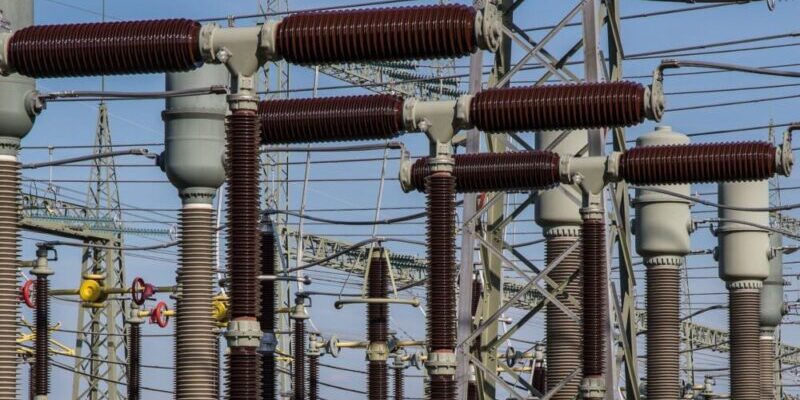Zambia Faces Severe Power Deficit Amid Prolonged Drought
Zambia is grappling with a worsening power deficit of 1,510 megawatts (MW), despite an installed capacity of over 3,777 MW. This shortfall has persisted despite efforts to import electricity, as the country’s drought-stricken conditions have severely impacted its hydroelectric generation capacity. As a result, consumers, particularly households, are experiencing only three hours of electricity daily.
The country has faced sustained power shortages since March 2024, after an El Niño-induced drought drastically reduced water levels in key reservoirs, including the 66-year-old Kariba Dam, which now holds less than 1.3 meters of usable water.
The dwindling water levels have severely hampered the dam’s ability to generate electricity, depriving Zambia of approximately US$45 million in power export revenue, according to ZESCO Managing Director Victor Mapani.
Energy Minister Makozo Chikote stated that the government is implementing various measures to address the crisis, including attracting fresh investment in the energy sector, focusing on solar and other alternative sources.
However, despite these efforts, power generation remains critically low at 890 MW, well below the national peak demand of 2,400 MW.
This power shortfall has had a significant impact on industries, including manufacturing, which are now operating at half capacity.
The disruption is affecting the production of goods, many of which are destined for foreign markets, including the United States under the Africa Growth and Opportunity Act (AGOA).
ZESCO Limited, in collaboration with various partners, including mining companies, is importing over 496 MW of power from the region.
However, this still leaves a shortfall of 1,014 MW, resulting in more than 12 hours of daily power rationing across the country.
The Zambezi River Authority (ZRA), which regulates the Kariba Dam shared by Zambia and Zimbabwe, reported a continued decline in water inflow.
As of September 2, 2024, water levels stood at 476.70 meters, representing just 8.30% of usable storage, down from 26.08% in the same period last year.
With only 1.2 meters of usable water remaining, ZESCO has warned of a potential shutdown of operations at the Kariba North Bank power stations by September 14, 2024.
President Hakainde Hichilema, currently in China, is engaged in talks with various energy suppliers to explore options, including solar, to offset the power deficit.
This comes even as the President recently officiated at the groundbreaking ceremony for the US$400 million Maamba Collieries Phase II project, which, upon completion, is expected to add 300 MW of thermal power to the national grid.
Minister Chikote highlighted the launch of a net-metering initiative as a significant step towards increasing energy production. This initiative encourages stakeholders to contribute to meeting the country’s energy demands through approved technology options regulated by the Energy Regulation Board (ERB).
Additionally, the approval of incentives for solar, geothermal, and liquefied petroleum gas (LPG) equipment has eased some pressure on the national grid.
The Rural Electrification Authority (REA) is also playing a crucial role by allocating resources to off-grid and on-grid solar projects in various communities.
In August 2024, REA completed three more solar mini-grids: a 60-kilowatt grid in Mpidi, Zambezi district; a 100-kilowatt grid at Chilubi Hospital in Chilubi district; and a 70-kilowatt grid in Chieftainess Mwanya, Lundazi district, bringing the total number of operational solar mini-grids to 13.
However, the Kariba Dam, which currently has only 10% of usable water left for power generation, continues to struggle with high utilization rates to meet demand.
With ZESCO’s water allocation at Kariba nearly exhausted, the power deficit is expected to increase by an additional 300 MW. Scheduled maintenance at Maamba in September 2024 is anticipated to cause a further 135 MW deficit, extending power rationing to between 17 and 22 hours daily.
In response to the worsening situation, ZESCO has secured 168 MW from South Africa’s ESKOM and is negotiating for an additional 50 MW from the Southern African Power Pool (SAPP), with deliveries expected to commence by August 21, 2024.
On the issue of tariffs, ZESCO is currently importing power at 12.6 cents per kilowatt-hour, while the local regulated tariff remains at 4.1 cents per kilowatt-hour.
The government is consulting with various stakeholders to develop a tariff mechanism that will enable ZESCO to recover its costs during this period of drought-induced challenges.
Energy Minister Chikote assured the nation that the government remains committed to addressing the energy crisis and ensuring a sustainable power supply for the country.
107 total views , 1 views today





